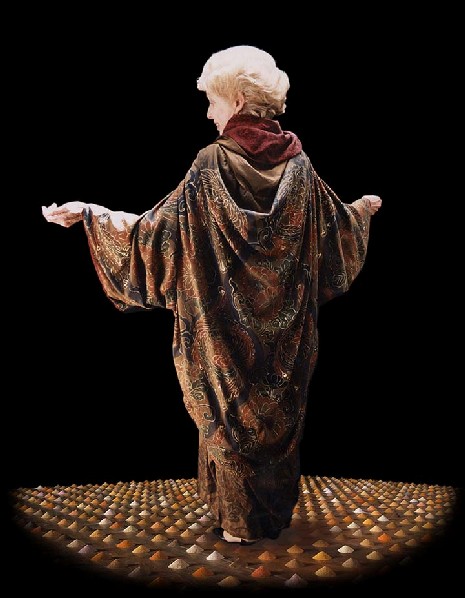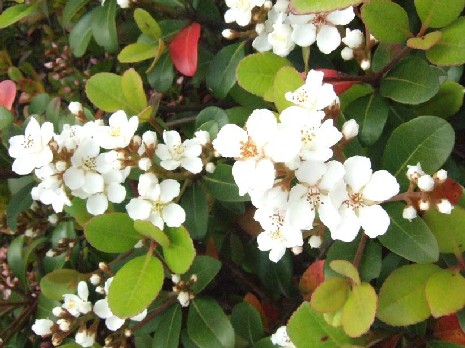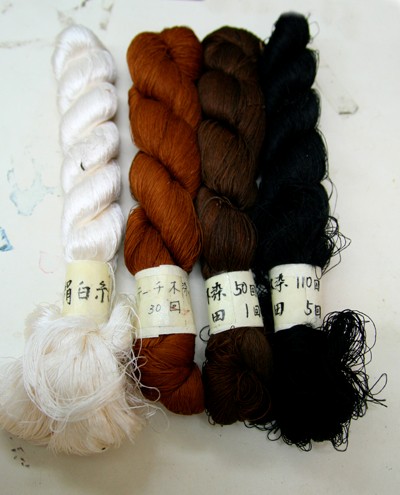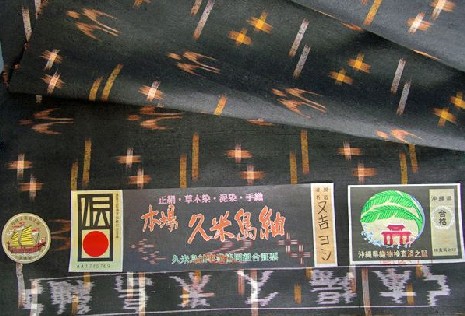Dorozome: Japanese Mud Dyeing
By John Marshall
Recently I had the pleasure of teaching a pigment dyeing class for the Intermountain Weavers Conference in Durango, Colorado. I was fortunate enough to have Judy Dominic as my neighbor, teaching a class in mud dyeing. This prompted many discussions of just what exactly mud dyeing entails. In this same issue of TRJ, Judy has written a thorough article about African mud dyeing, so I will restrict my comments to Japanese dye techniques.
First, let's establish the definition of mud: I'm using the term to mean naturally occurring minerals from the earth.
Within Japanese traditions of dyeing with natural sources we come across two entirely different approaches to using muds to dye cloth.
One method making use of earth is called bingata, in which various muds, as pigments, are glued to the cloth using soymilk as a binder. With the exception of the few particles that may become trapped by the fiber, most pigments won't stay intimately associated with the cloth without the help of a binder—they have no real long term staining qualities by themselves. Take a look at this picture I recently posted on my blog to see an example of this technique.
J-025, Natural Dirt Pigments on Silk

Every color you see on the silk, along with the piles of pigments on the floor, is derived from naturally occurring mineral deposits. Using these pigments is a rather straightforward process: the pigment is simply mixed with the binder (soymilk) and painted on the fabric surface. You can read more about preparing your own pigments for dyeing in an article originally written for TRJ by visiting my blog at http://johnmarshall.to/blog/2011/05/19/john's-art-pick-of-the-week-focus-on-dirt.
The second method is called dorozome, which literally means mud dyeing. But don't be misled by the name—it isn't the mud that is contributing the real color as in the pigments above. Whether yarn or yardage, the fiber is first thoroughly saturated with juice from a vegetable source and then the mud is applied to act as the mordant to the dye. One very famous version of Japanese dorozome is found in the region called Amami Ooshima in Kyushuu Prefecture.
The mud dyeing in Amami makes use of a tree pulp called sharinbai (Rhaphiolepis indica var. umbellate), called teechigi in the local vernacular. The branches are chopped into small chips and simmered in large cauldrons for two days, at which point the pulp is removed. The yarn is steeped in the golden-orange extract, dried and then massaged (temomi) in a slurry of mud. The number of cycles determines the depth of the color.

Left to right: undyed silk yarn, yarn dyed with sharinbai (30 dips),
yarn with sharinbai and mud (50 dips), and sharinbai and mud (110 dips).

In Amami, the mud is taken from the iron-rich rice fields of the region, continually replenished by the abundant mountain streams flowing through the area to the sea. In other regions, the fibers are buried for extended periods of time to allow the dyes to react with the naturally occurring mordants of the local mud.
The region of Ooshima is best known for its highly intricate patterns of hand-woven kasuri silks. Kimono-length bolts of this fabric easily run over $1800 for thirteen yards in length by twelve inches in width and are highly prized for their strength and subtle beauty.
Each strand is meticulously resisted with string before dyeing
to create the woven pattern.

The label states that it is hand woven with pure silk,
using natural dyes with dorozome, and is certified as authentic
by the National Craft Association.

The links below are in Japanese, but you may find the photos interesting, and of course it's always fun to see other artists' work spaces!
Links to a few Web sites for more information:
http://www.dorozome-osari.jp/dorozome.html
http://www.csuchico.edu/~mtoku/vc/Exhibitions/ohshima/different.html
http://www.japanlivingarts.com/?p=2744
Links to a few online videos:
http://www.youtube.com/watch?v=CdgpSSwR2O8
http://www.youtube.com/watch?v=J-GJROZGkQ0&feature=related
http://www.youtube.com/watch?v=JY8qyF1oPco&feature=related
 Turkey Red Journal
Turkey Red Journal
